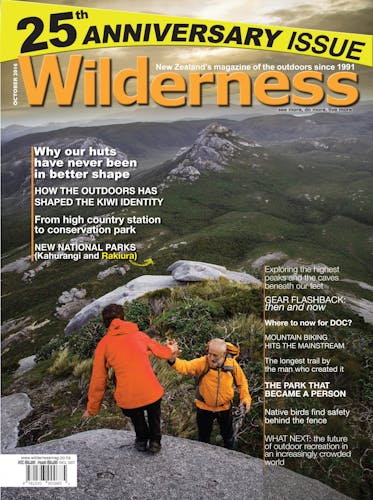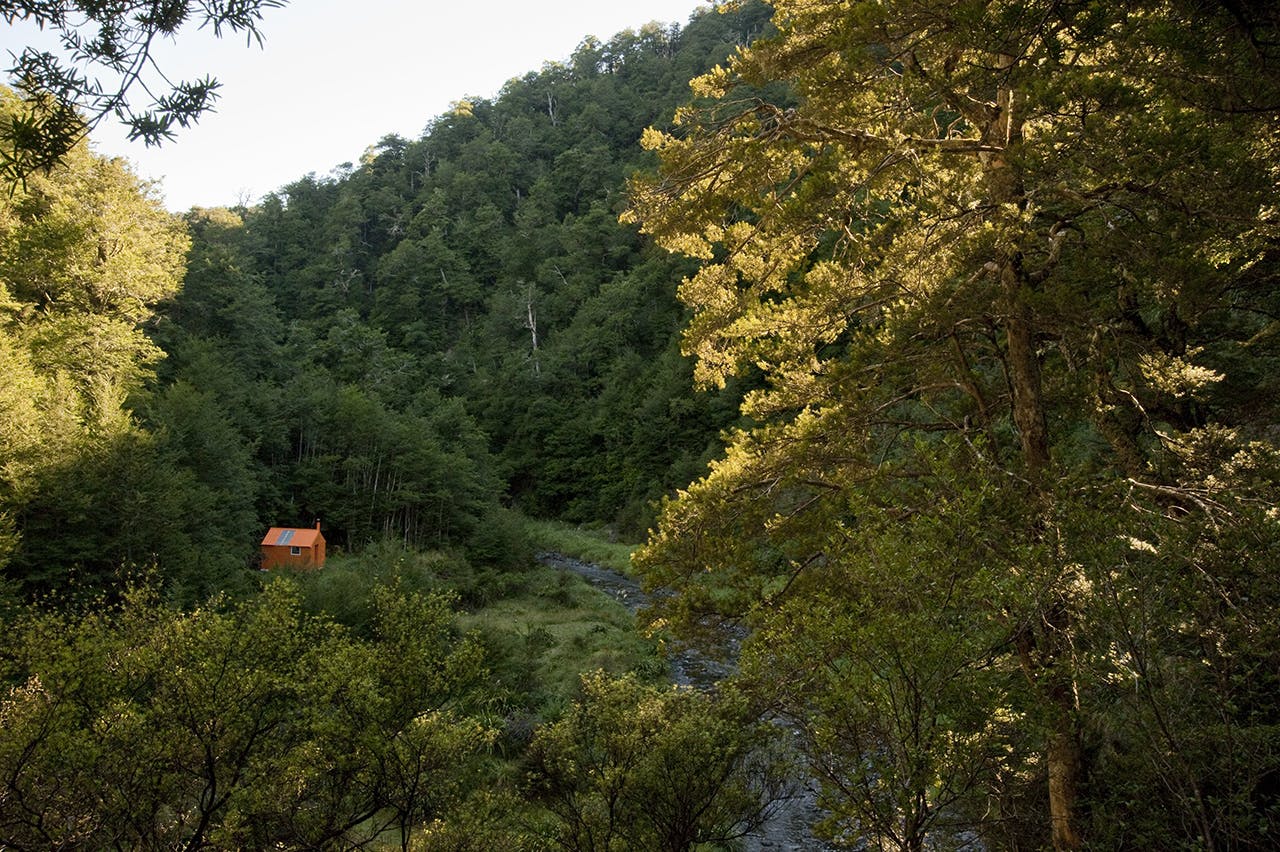The hut network has never been in better shape.
By Shaun Barnett
Trampers of my vintage often remember the New Zealand Forest Service era with nostalgia. The NZFS built hundreds of huts, populated the backcountry with facilities, and changed the face of outdoor recreation. Their simple but effective 4- and 6-bunk huts became the classic backcountry structures.
When the Department of Conservation took over in 1987, it had big boots to fill. For the first time, all the country’s public huts came under the umbrella of one organisation. The first nationwide hut census revealed historic huts, NZFS huts, Lands and Survey huts, club huts and a ragtag collection of other structures – tallying about 1000. Managing them in the lean-budget political environment of Rogernomics then Ruthanasia was never going to be easy. How did DOC perform?
Much has changed over the last 25 years: introduction of hut standards and nationwide hut fees, a trend for larger huts, more hut wardens, escalating costs, booking systems and a growing influx of overseas hikers who sometimes dominate use of the more popular huts.
DOC made attempts to rationialise the hut network, with programmes that had acronyms like ‘ROR’ and ‘VAMP’. Some huts were removed, some were expanded or modernised, and some restored. Through high-country tenure review, a number of former mustering huts became part of the public conservation estate. And this century we’ve entered an era of classy new DOC huts.
Under-resourcing and pressure from tourism has created tension between front-country and backcountry interests.
At times DOC has needed its recreation priorities questioned, and a gentle reminder that Kiwi trampers, hunters, climbers, anglers and mountain bikers are not visitors, but consider the backcountry to be their backyard.
Overall, though, I think DOC has done a good job of managing our outdoor facilities. At least some of the nostalgia for the ‘good old Forest Service days’ is misplaced.
When DOC took over, many backcountry huts were in poor condition. Towards its end, the NZFS lacked resources, and maintenance was sometimes neglected. I stayed in Upper Makaroro Hut in the Ruahines just before DOC took over. Unlined and badly needing a paint, it teamed with rats. They ran over the exposed rafters, inches above my face on the top bunk. My last visit to the hut in 2013 revealed it nicely lined and freshly painted, with nary a rodent. Recognition of the heritage importance of these deer-culling huts has resulted in commendable efforts to maintain many of them.
Under DOC’s watch, older historic huts have also been beautifully restored. Great examples include Riordans Hut (Kahurangi), Hideaway Biv (Ahuriri) and Chancellor Hut (Westland). Another heritage landmark was restoration of a tent camp in Kahurangi’s Cobb Valley in 2014. With greater recognition of the hut network as a whole, hopefully a diverse range of huts can be maintained – from historic to modern, tiny to large, basic to elaborate.
Since 2002, DOC has built new huts or replaced smaller huts at some inspired locations. Atiwhakatu (Tararuas), Nina (Lake Sumner), Brewster Hut (Mt Aspiring) and Green Lake (Fiordland) are just a few examples of new huts that have transformed popularity of previously under-utilised locations. The well-insulated, easy-to-clean and comfortable huts appeal to families or lesser-experienced trampers. That’s a good thing.
However, it’s not all jolly news. Some white elephants have resulted; Plateau Hut at Aoraki/Mt Cook cost $900,000 but gets a measly 300 bed-nights a year. Parts of the backcountry have been neglected in favour of popular tourist tracks. New fire regulations and safety concerns have seen a proliferation of warning signs in huts. Increased fees make some huts too expensive for low-income families, and hut booking systems or overbearing wardens have reduced some of the spontaneity we used to enjoy. However, booking systems actually suit many New Zealanders who want assurance of a bunk; and DOC did yield to pressure to make Great Walk huts free for under-18s.
The Outdoor Recreation Consortium, funded by DOC and administered by Federated Mountain Clubs, the New Zealand Deerstalkers’ Association and Trail Fund NZ, has prompted all sorts of exciting hut work; for example, the Nelson Tramping Club’s restoration of Kahurangi’s Flora Hut – not so long ago slated for removal.
While the cynic might view this as DOC palming off its work, I see it as a healthy hybrid where both the outdoor community and the government contribute. It allows clubs or individuals to target their favourite huts, often ones low on DOC’s priority list. It harnesses skills in the outdoor community, creates pride and encourages co-operation.
We have arguably the best hut network in the world. There will always be debate about how to manage it, but in 2016 many of our huts have never been in better shape.
– Shaun Barnett is a Wilderness roving editor and the co-author of Shelter from the storm, the story of New Zealand’s backcountry huts







